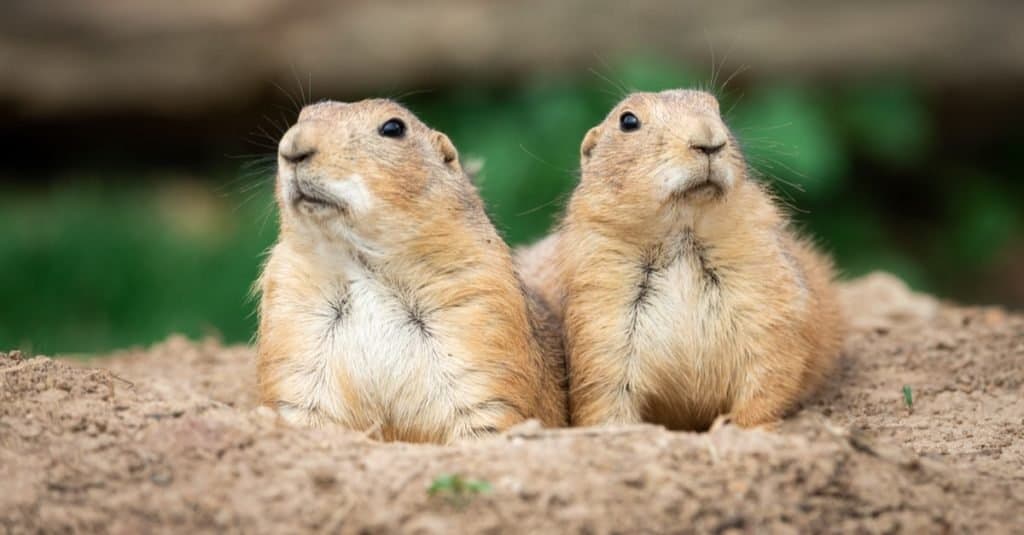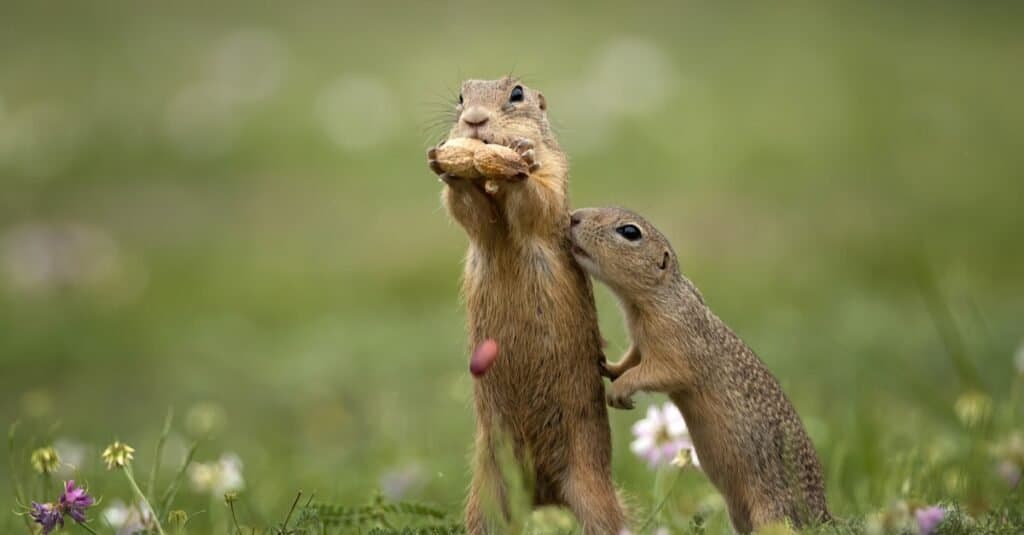It is not surprising to often mistake a gopher with a prairie dog or vice versa. After all, both mammals are small rodents (yes, prairie dogs are not dogs!), and they have incredible similarities even from afar and up close. Gophers and prairie dogs both burrow underground, but apart from this shared trait, these two rodents are more different than they are alike. Although gophers and prairie dogs look a lot similar, they belong to different families. Gopher rodents, sometimes referred to as pocket gophers, are considered by taxonomists as an entire species as they number 41. On the other hand, there are only 5 species of prairie dogs and they are under the Sciuridae family, which encompasses the whole squirrel species. This means that prairie dogs are more closely related to squirrels than gophers. But apart from their origin, what are the other significant differences between a gopher vs prairie dog? Below, we will explore the key features that set each rodent apart.
Comparing a Gopher and a Prairie

| Gopher | Prairie Dog | |
| Size and Appearance | – 6 to 8 in (15–20 cm) in body length, with a tail measuring 1 to 2 in (2.5–5 cm) long and 2.5 to 3.5 inches wide- weighs an average of 2.2 lb (1 kg) | – 12 to 16 in (30–40 cm) long including a short tail- weighs between 1 and 3 lb or 0.5 and 1.5 kilograms. |
| Habitat | – any type of habitat with abundant vegetation and healthy soil | – more specific: usually settles in prairie and grasslands |
| Behavior and Activity | – solitary creatures – rare to spot during the day as they like to hide inside their tunnels | – lives and forages as a family group- most active during daytime and can be often seen above the ground |
| Diet | – tubers and bulbs, grass, seeds, leaves, roots of trees, and tender stems | – grass, small seeds, roots, fruit, buds, cacti, blossoms, and some insects |
| Damage | – damaged or eaten roots | – unhealthy grass |
The 5 Key Differences Between a Gopher and a Prairie

Gophers and prairie dogs can cause damage to properties.
©paha1205/Shutterstock.com
The main differences between a gopher and a prairie are their size, habitat, behavior, diet, and damage to plants and vegetation. Both rodents are considered a nuisance to many farmers and yards. Since they burrow and create mounds in areas landscaped by farmers and gardeners, they destroy properties. There are a few differences between the two mammals’ diets, but since they both feed on crops and ornamental plants, they can be a problem and can cause severe damage to your lawn. It might be difficult to tell the two animals apart because of their similarities in appearance and behavior. Still, we will take an in-depth dive into each of their differences.
Gopher vs Prairie: Size and Appearance

Prairie dogs are bigger and longer than gophers.
©AB Photographie/Shutterstock.com
One of the most significant differences between gopher vs prairie is their size. Prairie dogs are remarkably bigger and longer than gophers. While prairie dogs measure 12 to 16 inches in length, gophers are only half their size, reaching 6 to 8 inches long. Prairies weigh about 3 pounds, while smaller gophers weigh 2.2 pounds. Gophers, unlike prairie dogs, do not have a distinct neck and store and transport food in pouches in their cheeks, from which they got their name pocket gophers. You can also tell the two rodents apart through their tails. A gopher’s tail is hairless, but a prairie dog’s tail is bushy.
Gopher vs Prairie: Habitat
Gophers can be found in various environments in Central and North America, as long as there is ample vegetation to keep them sustained and they can dig in the soil. Prairie dogs have more limited home choices, inhabiting North American prairies and open grasslands. Gophers meticulously plug the entrances to their tunnels to keep light and other animals out while controlling the temperature and moisture level within. Prairie dogs allow themselves to come and go by leaving the entrances to their burrows open.
Gopher vs Prairie: Behavior and Activity

Gophers are less social compared to prairie dogs.
©eumates/Shutterstock.com
Prairie dogs are more social compared to gophers. They share food, live in family groups with other prairies, and protect themselves from predators. For instance, the black-tailed prairie dog lives in “towns,” which are enormous networks of caves that can encompass hundreds of kilometers. On the other hand, gophers are solitary creatures and only come together to mate. They can mate and reproduce all year, while prairies only have one mating season every spring.
Gophers are rare to spot during the day as they like to hide in their tunnels, while prairie dogs are most active during the daytime and can often be seen above the ground, away from their burrows.
Gopher vs Prairie: Diet
Gophers and prairie dogs are herbivores, which means they exclusively eat plants. While the two share some common food, gophers are more into tubers and roots of plants rather than blossoms and weeds. Gophers love to eat tubers and bulbs, grass, seeds, leaves, roots of trees, and tender stems. Since prairie dogs specifically live in grasslands, they prefer eating grass, tiny seeds, roots, fruit, buds, cacti, and blossoms. Prairie dogs can also eat a gopher diet that includes roots and tubers, often foraging grassy materials. Although herbivores, prairie dogs can also feed on insects.
Gophers eat by bringing food down into their burrows. On the other hand, prairie dogs come out of their burrows every morning and spend the majority of their day hunting for food above ground.
Gopher vs Prairie: Damage
The most remarkable distinction between the prairie dog and gopher diets is that gophers consume tree roots. Consuming roots damage the whole plant or tree, which leaves the distinct gopher damage of damaged roots. Prairie dogs graze the grass, making them appear unhealthy. People who keep manicured lawns consider prairies a nuisance because they tear down a maintained yard of grass. Both the gopher and prairie dogs dig holes and create tunnels. These holes make a yard look messy and untended, so most people like to keep them both away.
The photo featured at the top of this post is © SERGEI BRIK/Shutterstock.com
Thank you for reading! Have some feedback for us? Contact the AZ Animals editorial team.






